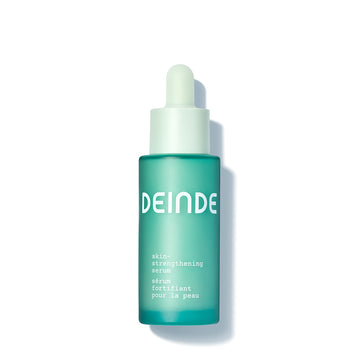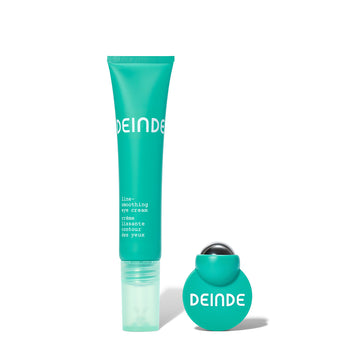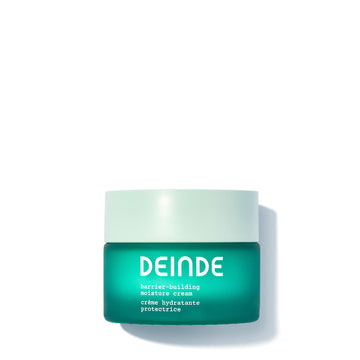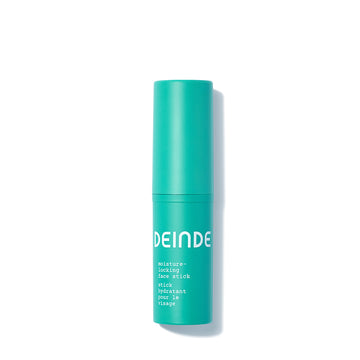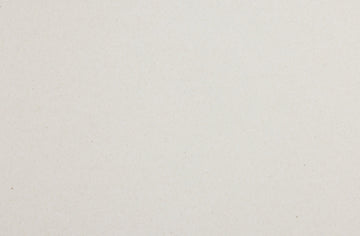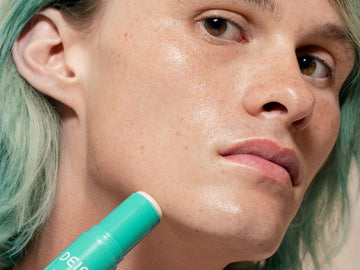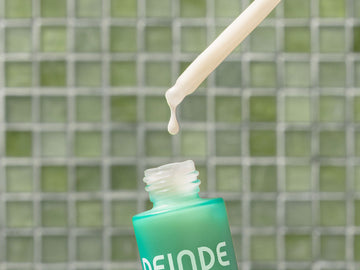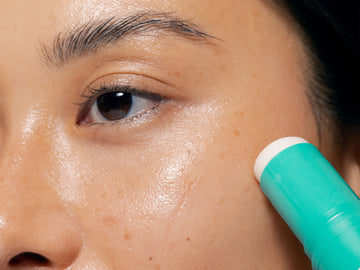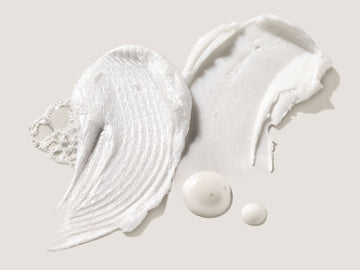
How To Layer Your Skincare
The more skincare products there are in your lineup, the more there are to layer. And even if you maintain a minimal routine (go, you!), there’s still the matter of timing, order, and making sure everything syncs up well. Learning to layer skincare products properly not only brings out the best of each product, but also ensures some true skincare harmony. (The whole is the sum of its parts after all!).
In the fight against chronic, low-level inflammation—also called inflammaging—you need all hands on deck. In order to boost your skin’s radiance and improve its health, a routine that includes cleansing, treating, moisturizing, and protecting is essential—and important to apply in that order. So, let’s delve into the art of layering skincare, and unlock the secrets to achieving vital skin.
Set the Stage with Proper Cleansing
Cleansing as the primary step of any skincare-layering routine can sound obvious or trite, but it’s actually necessary for preparing your skin to properly absorb and utilize the products that follow. However, the type of cleanser you use is of the utmost importance.
Thanks to our high school days, when drying our faces to the bone with oil-free, benzoyl peroxide-based acne products was somewhat dopamine-inducing, it’s easy to think you need to strip your face of all moisture in order to get a proper cleanse. Not true!
Depending on your skin type, there are many different ways to cleanse—oil, foam, gel, cream, bars, and balms. Yet one thing remains consistent throughout: opting for a more balanced cleanser can support your skin’s natural pH. Doing so protects and maintains your skin barrier function (which shields your skin from everyday toxic aggressors and free radicals).
How to Pick a Cleanser Based on Your Skin Type
→ Oily skin
When you have oilier skin, it can be tempting to want to remove all oil with more drying or skin-stripping ingredients, but that can actually trigger an increased production of oil, which…not to bring up high school again…but remember those face-blotting pads that were addictive? We can’t go through that again.
Gel cleansers, or cleansers that contain gentle-exfoliating ingredient heroes like lactic, salicylic, or glycolic acid, can help to reduce your skin’s oil production and clear clogged pores without disrupting the skin barrier. If you tend to lean on the side of being a #CloggedPoreGirlie, wellness-beloved ingredients like coconut oil may not be for you
→ Dry Skin
Dry skin can be a tricky beast when it comes to tackling both moisture and sensitivity. While exfoliating is extremely trendy as it relates to anti-aging, dry skin is better suited for creamier formulas and gentle cleansers that are sans clays, acids, or aggressive exfoliators—all of which can contribute to, or exacerbate, dryness.
Because moisture is OF the essence, humectants like hyaluronic acid, glycerin, and sodium hyaluronate can attract water and hydration to the skin, giving you an unstoppable glow and supple skin without that face-pull feeling to which only the dry contingent can relate.
→ Acne-Prone Skin
As we all know, acne is—well—so annoying and can happen to the best of us, whether you have dry, oily, or combination skin. Of course, there are multiple causes of acne, which can make treatment or reduction very frustrating. However, one great way to think about treating acne is to continue to support the skin in getting rid of dead skin cells.
Cleansers with salicylic acid (which is a beta-hydroxy acid) can more deeply penetrate the skin’s epidermal layer to both get rid of extra sebum and eliminate dead skin cells that could be clogging pores and contributing to blemishes or breakouts.
You could also choose to—and this will shock you—turn towards oil cleansing, which can both remove dead skin cells and effectively wash away dirt, even if you have oily skin. Not all oils are created equal, though. Sweet almond oil, jojoba oil, and rosehip oil help to mimic the skin’s natural barrier, making them ideal candidates when cleansing with oil.
→ Combination Skin
If you’re somewhere between dry and oily, don’t worry, you’re not left out of the conversation. Gel or cream-based cleansers with gentle exfoliants like alpha hydroxy acids or soothing ingredients like vitamin E and aloe, tend to be on a lighter side and can reduce oilier areas of the skin without irritating the dry parts.
Okay, now that we’ve gotten through all of the basics, it’s worth telling you that DEINDE’s purifying whipped cleanser is ideal for all skin—yes, even sensitive skin types. Focused on protecting the skin’s natural barrier as well while providing gentle yet effective cleansing, the whipped cleanser leverages biotech ingredients like polysaccharides, fermented vegetable-based glycolipids, and allantoin that soothe the skin, add extra moisture, and support a healthy pH.
Consider a Toner Moment
Toners aren’t mandatory —nothing is! But toners are great for balancing the skin’s pH levels and removing any residual traces of dirt or makeup. Following your cleansers, toners are next on the docket in your skincare layering process.
Toner does a few things. Toner can hydrate, cleanse, and soothe. For this reason, it can be difficult to remember when to layer toner (or what it even does!). We’re going to bring up high school once again. Using really strong alcohol-based toners gave the impression that you were making the skin extra clean. We (skincare professionals) have since learned that alcohol-heavy toners can irritate the skin even more. Therefore, it’s important to find a toner made without harsh chemical ingredients. Instead, look for one that provides that soothing hydration and all-day support for your skin barrier.
Toners come in various forms, including liquids, gels, and mists. You might want to look for ingredients like hyaluronic acid, aloe, or alpha hydroxy acids. Some people choose to use reusable cotton pads to apply toner, which can be especially helpful for ensuring that you do not dirty up that beautiful face you just cleansed.
Invite Your Serum to the Chat
At this point in your layering, it’s time to either (a) address some targeted treatments and/or (b) strengthen your skin with a vitality-boosting serum. If you use products to address acne or hyperpigmentation, this is the time to bring them down from the medicine cabinet. (Let’s be honest, they’re already on the sink counter).
Because there can be many different goals during this phase of your skincare layering, you might need to look more closely at each product in your repertoire to know what goes on first. Sometimes ingredients you’ll see applied at this stage include vitamin C, hyaluronic acid, retinol, or salicylic acid. As you search for a serum, here are the ingredients to consider in your fight against inflammaging. (They also just so happen to be in our skin-strengthening serum).
Naringenin → A patented powerhouse polyphenol that is clinically proven to outperform comparable actives, targeting the visible signs of inflammaging by strengthening skin against daily disruption and sustaining firmness and elasticity.
Niacinamide → A form of vitamin B known for its ability to help clear pores and refine uneven skin texture.
Biomimetic Tripeptide → A signal peptide that supports skin's natural collagen production.
Date Seed Extract → A clinically-proven biobased ingredient that reduces signs of uneven skin tone and overall skin discoloration.
Whatever products you choose to layer at this stage, make sure your skin is clean and dry. Allow everything to absorb fully before moving onto the next step. Think of this phase of layering as the moment you’re working to improve the elasticity of your skin. You’ve already cleansed it thoroughly, you’ve balanced your pH levels; now you’re ready to infiltrate deeper. A strong serum can help combat fine lines, dullness, uneven tone and texture.
Eyes on the Prize
Most dermatologists and skin specialists recommend applying eye cream after your serum application before your heavyweight moisturizer. However, where you place your eye cream all depends on the weight of the eye cream itself. While most eye creams tend to lean on the lightweight side, some can be thicker and richer in texture, making them well-suited to go on as a final part of your skincare layering routine.
The skin under your eyes is actually not like the rest of the skin on your face. It’s very delicate and thin, containing no sebaceous glands. Because of this, your eye area can show signs of aging a lot more quickly, making an eye-specific moisturizer that much more essential. Therefore, eye cream should be applied during a daytime routine and a nighttime routine.
Lock. It. In.
In traditional layering lore, the third act is always the moisturizing phase. We love that, and we support it. But we also want to emphasize that the third act is about locking in your gains to ensure your entire layering process is not susceptible to disruption from outside elements. Not only do you want to apply your moisture at this stage, but you want to lock it in too.
This is the phase in which you bring your hydration agents up from the benches and begin to build your final skin barrier layer. So yes, if you use a moisturizer, start by applying that. It’s important to choose a moisturizer that flatters your specific skin type. This might mean lightweight for oily or acne-prone skin, or rich and nourishing for dry skin.
Moisturizers come in various formulations, including creams, lotions, gels, and oils, and each caters to various skin types. In your search for a moisturizing sidekick, we recommend you look for products that contain squalane and/or ceramides. (And of course Naringenin — the queen supreme of all DEINDE skincare). Squalane is a skin-identical lipid found in the top layer of the dermis that binds moisture to the skin for a softer, smoother, lightweight feel. Ceramide NP is one of the primary skin-identical lipids that helps to bind cells together to lock in moisture and fortify the skin barrier. All of these ingredients are found in the moisture-locking face stick.
SPF. (Please, people, please!)
Perhaps you have that one friend who still doesn’t know that broad-spectrum SPF is more of a daily necessity than a one-time-in-Miami kind of thing. The truth is, no skincare routine is complete without layering your sun protection in the final phases. Most often you’re going to want to look for something that is SPF 30+, depending on your environment and exposure. Remember: sunscreen doesn’t just shield your skin from harmful UV rays, it also helps to protect you against inflammaging.
Given that you’ve already applied a few other layers by this point, it might benefit you to choose a sunscreen that is lightweight and non-comedogenic. You want your SPF to absorb easily and naturally, not compromising the moisture that you locked in during the prior step. You want to avoid anything that clogs your pores (of course) or anything that leaves a greasy residue. Depending on your context, you may want to reapply your SPF throughout the day, especially if you’re outside or sweating heavily.
How To Layer at Night
The process above refers to a daytime regimen. So how do you layer your skincare at night? For one thing, you’re unlikely to use SPF at night, but you might be more likely to use retinol-based products. You might also have an exfoliating routine to incorporate.
Let’s start there.
First, use your nighttime exfoliant. Exfoliation helps to slough off dead skin cells, unclog pores, and promote cell turnover, resulting in smoother, brighter skin by the AM. You can choose between physical exfoliants like scrubs or BHAs (beta hydroxy acids) based on your skin type and personal skin concerns. You probably don’t need to exfoliate every night. Over-exfoliation can cause irritation and sensitivity. We recommend 2-3 times per week at the most.
On nights you’re not exfoliating, now would be the time to apply your retinol. Retinol is a derivative of vitamin A, and it’s renowned for its anti-aging benefits, including reducing fine lines, wrinkles, and hyperpigmentation.
Finally, if you use a specific moisturizer at night, feel free to apply it last.
Some More (Kinda Random) Things To Consider
The thin-to-thick principle. When in doubt, consider applying thin consistency products before thick ones. Lightweight serums are best applied first before moving onto heavier creams or oils.
Give it some time. The best routines are not rushed. When layering, allow each product to fully absorb into the skin before applying the next one. This ensures that each layer can penetrate effectively without diluting or interfering with the efficacy of the previous product.
You do you. Layering can be an art and a science depending on what you’re using in your routine. As always, feel free to experiment with your own layering order when you feel like your routine is not working for you. Visit our blog for more information, research, and science-informed guidance as you build out your routine.
Hopefully this has helped provide a little clarity on how to best layer your skincare. At DEINDE, we believe skin is exceptionally sensitive to everyday stressors. By layering your skincare appropriately, you can help build up your defenses and combat accelerating skin aging. Layer by layer, it is possible to make your skin more resilient.
Studies cited:
- Skin barrier function | PMC
- Glycolic acid for the skin: Benefits and how to use it | Medical News Today
- What Does Toner Do? | Byrdie
- Salicylic Acid Topical | MedlinePlus
- Sunscreen and Your Morning Routine | Johns Hopkins Medicine
- Noncomedogenic ingredients and their skin care benefits | Medical News Today
- Beta Hydroxy Acids | FDA
